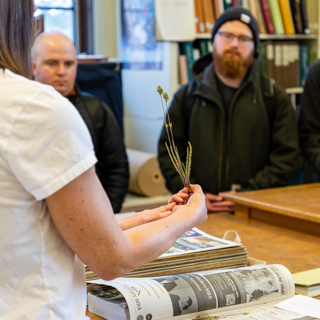The Montana Diatom Collection
The Collection
Diatoms (Kingdom Plantae: Division Bacillariophyta) are eukaryotic photosynthetic microbes distinguished by transparent cell walls composed of hydrated silica (SiO 2) or opal. The cell wall consists of two overlapping halves that are intricately ornamented in patterns characteristic of each species. Diatoms are at the base of nearly all aquatic food chains—the slippery film on rocks in streams is composed mostly of diatoms. Diatoms first appeared in the Cretaceous period at about the same time as flowering plants. About one-third of the diatom species in the Northwest remain to be named and described.
The Montana Diatom Collection consists of over 16,000 permanent slides and 2,917 vials of cleaned material representing diatom collections from over 7,033 localities throughout the Northwest United States. The MDC is in two parts: (1) the main collection, which as of Fall 2022 is now housed at the Academy of Natural Sciences in Philadelphia (this includes all of the vials of cleaned material) and (2) 6,200 replicate slides at MONTU made from samples collected since 1999. The MDC contains types of diatom species.
The Type Collection of Diatoms housed at the UM Herbarium includes over 110 species. These types are the particular specimen that was used when the species was formally described. Diatomist Loren Bahls is the main contributor to the Montana Diatom Type Collection. Curator Marina Potapova, at the Academy of Natural Sciences in Philadelphia, assist MONTU's curator in managing the collection. Please see the link below for a full list of described Montana Diatom Types.
Publications based on the Montana Diatom Collection include noted works by authors who have made significant contributions to the field over the past 5 decades.
Diatoms of North America is a rich, online resource for information on diatom diversity and their importance.

Navicula aurora

Cyclotella antiqua
